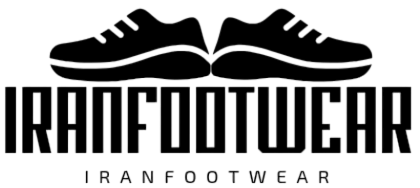Overview of the Footwear Industry in Iran
The **footwear industry in Iran** is a significant sector within the country’s economy, recognized as the **11th largest producer** of footwear globally and the **largest in West Asia**. This industry not only serves as a vital source of employment but also has the potential to become a hub for raw materials and exports. The sector encompasses a wide range of activities, including the production of leather, shoes, bags, and accessories, employing approximately **500,000 people** directly or indirectly[1].
## Historical Context
Footwear production in Iran has deep historical roots, dating back to the **Medes era** in the 7th century BC. Over time, the industry evolved significantly, especially during the **Achaemenid period**, when shoe-making techniques varied based on social class. The first modern industrial tannery was established in **1928**, leading to a growth spurt in the leather industry until nationalization post-1979 Islamic Revolution[1][3].
## Current Industry Landscape
As of 2023, Iran produces about **270 million pairs of shoes annually**, with an export volume of **40-50 million pairs**. Despite these figures, Iran’s footwear exports remain modest at around **$100-120 million**, particularly when compared to competitors like Turkey, which exported over **$1 billion** in footwear in 2022[1][3]. The industry is characterized by a mix of approximately **10,000 production units**, with a majority being small to medium-sized artisan businesses[1].
### Key Production Regions
The leading provinces for footwear production include:
– **Tehran**
– **East Azarbaijan**
– **Khorasan Razavi**
– **Isfahan**
– **Qom**
– **Zanjan**
Tabriz is notably recognized as the hub of the leather industry in Iran due to its favorable climatic conditions for leather production[3].
## Challenges Facing the Footwear Industry
Despite its potential, the Iranian footwear industry faces several challenges:
– **High Import Rates**: A significant increase in imported footwear has adversely affected local manufacturers. The market has seen a three-and-a-half-fold rise in shoe imports recently[7].
– **Incomplete Production Chain**: Many components necessary for shoe production are not manufactured domestically, leading to increased reliance on imports and reduced competitiveness in international markets[3].
– **Economic Pressures**: High taxation and financial constraints hinder profitability for local producers. Many companies struggle with liquidity issues and high operational costs[7].
## Future Prospects
The Iranian government is actively pursuing measures to revitalize the footwear sector. Recent initiatives focus on completing the supply chain for raw materials—previously reliant on imports for 30% of its needs—now reduced to less than 5%[1]. Additionally, there is an emphasis on promoting domestic products through smart advertising and branding strategies aimed at enhancing consumer awareness and preference for local goods[3].
### Strategic Priorities
To strengthen its position in both domestic and foreign markets, Iran’s footwear industry aims to:
– Foster foreign joint ventures.
– Enhance fashion branding.
– Develop advanced distribution networks.
– Focus on export development.
## Conclusion
The Iranian footwear industry stands at a crossroads with immense potential for growth amidst significant challenges. By addressing issues such as import dependency and production inefficiencies while capitalizing on its rich history and quality raw materials, Iran can enhance its standing as a key player in the global footwear market. Continued investment and strategic planning will be crucial for this sector’s future success.
Citations:
[1] https://www.iranfootwear.com

